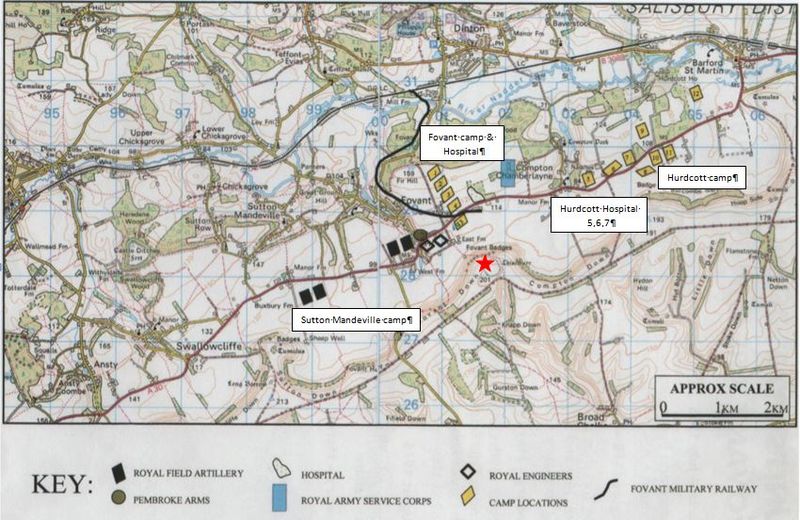Difference between revisions of "Sutton Mandeville"
From Our Contribution
(→Soldiers who passed this way) |
(→Soldiers who passed this way) |
||
| (3 intermediate revisions by the same user not shown) | |||
| Line 24: | Line 24: | ||
===Soldiers who passed this way=== | ===Soldiers who passed this way=== | ||
'''1917''' | '''1917''' | ||
| + | * † [[Charles Alexander Wann]] 4 - 10 Mar 1917 | ||
*[[Arthur Leworthy Bettenay]] 16 Sep 1917 - 17 Apr 1918 - 10th & 11th Training Battalions | *[[Arthur Leworthy Bettenay]] 16 Sep 1917 - 17 Apr 1918 - 10th & 11th Training Battalions | ||
*[[Clarence William Hammond]] 5 Nov - 17 Dec 1917 - 10th Training Battalion | *[[Clarence William Hammond]] 5 Nov - 17 Dec 1917 - 10th Training Battalion | ||
| + | * † [[Cecil Herbert McKeown]] 26 Aug 1917 - 22 Jan 1918]] - 10th & 11th Training Battalions | ||
| − | '''1918'' | + | '''1918''' |
*[[Robert Frank Bickford]] 1 - 23 Oct 1918 | *[[Robert Frank Bickford]] 1 - 23 Oct 1918 | ||
Latest revision as of 14:27, 19 August 2021
 |
Remarks
At the outbreak of WWI there became an urgent need to increase Military Training & Transit camps. Towards the end of 1914, John Combes, of East Farm at Fovant, was informed that part of his land was to be requisitioned for one such camp. Subsequently, land to the east and west of his farm was also commandeered and an area stretching from Compton Chamberlayne to Sutton Mandeville became one vast Military Camp. A single track railway connected the camps to the main line. It is believed that Sutton Mandeville had 3 Camps during WWI.
The Australian 3rd Division's training units were based here from 1917. Prior to that, the 37th Battalion was one of a number of third Division units that undertook training in this are prior to deploying to France.
Soldiers who passed this way
1917
- † Charles Alexander Wann 4 - 10 Mar 1917
- Arthur Leworthy Bettenay 16 Sep 1917 - 17 Apr 1918 - 10th & 11th Training Battalions
- Clarence William Hammond 5 Nov - 17 Dec 1917 - 10th Training Battalion
- † Cecil Herbert McKeown 26 Aug 1917 - 22 Jan 1918]] - 10th & 11th Training Battalions
1918
- Robert Frank Bickford 1 - 23 Oct 1918
Notes